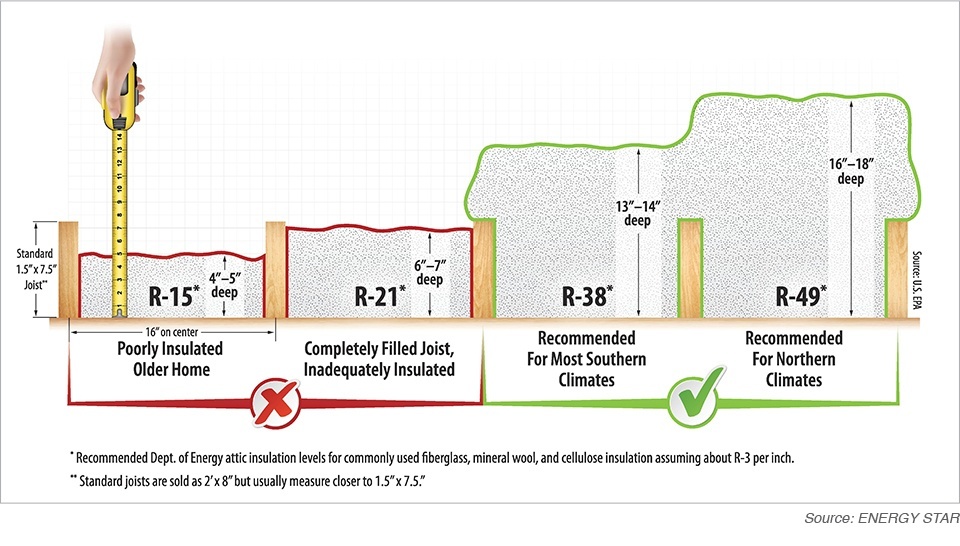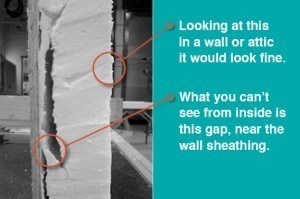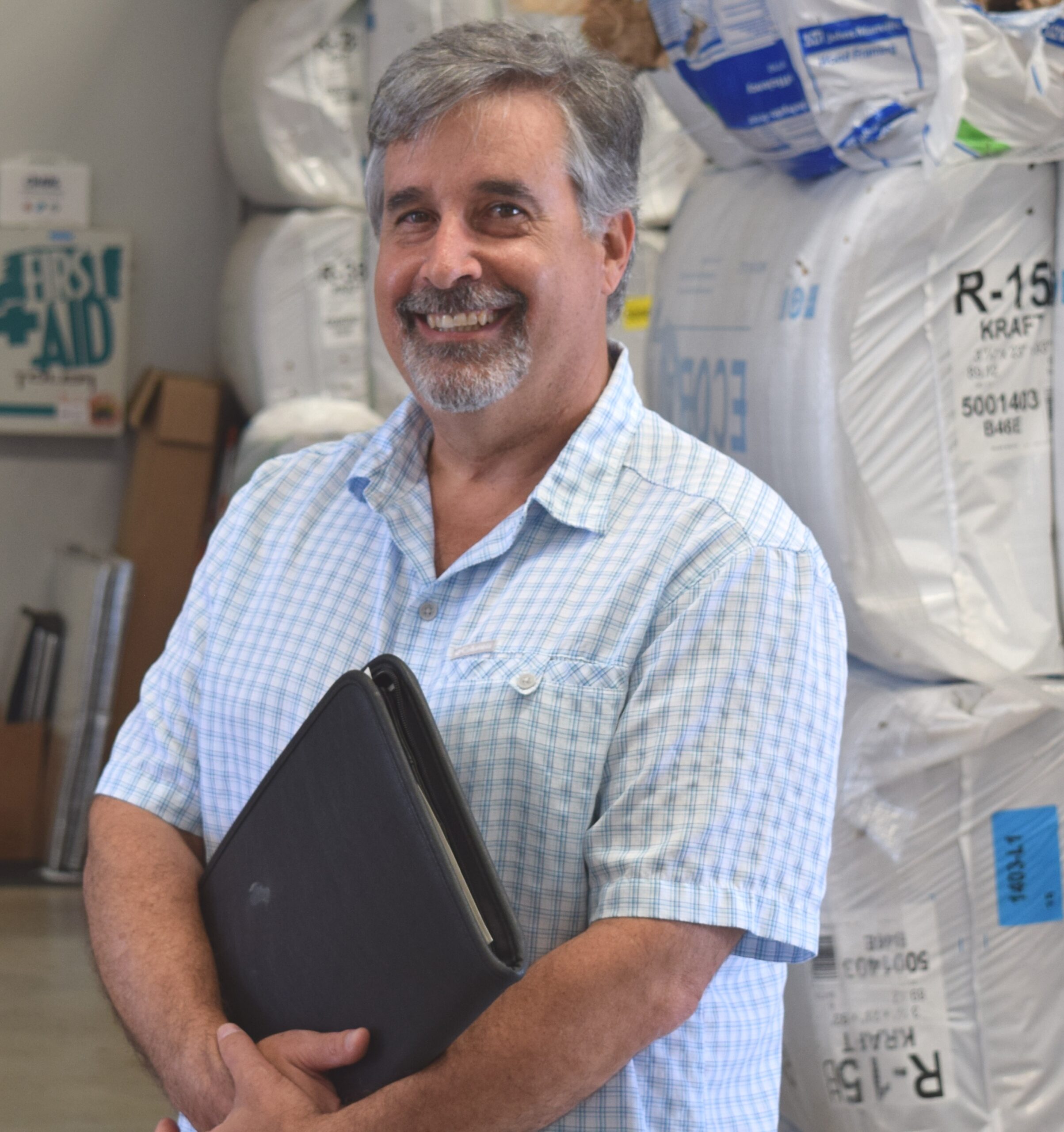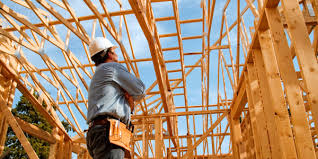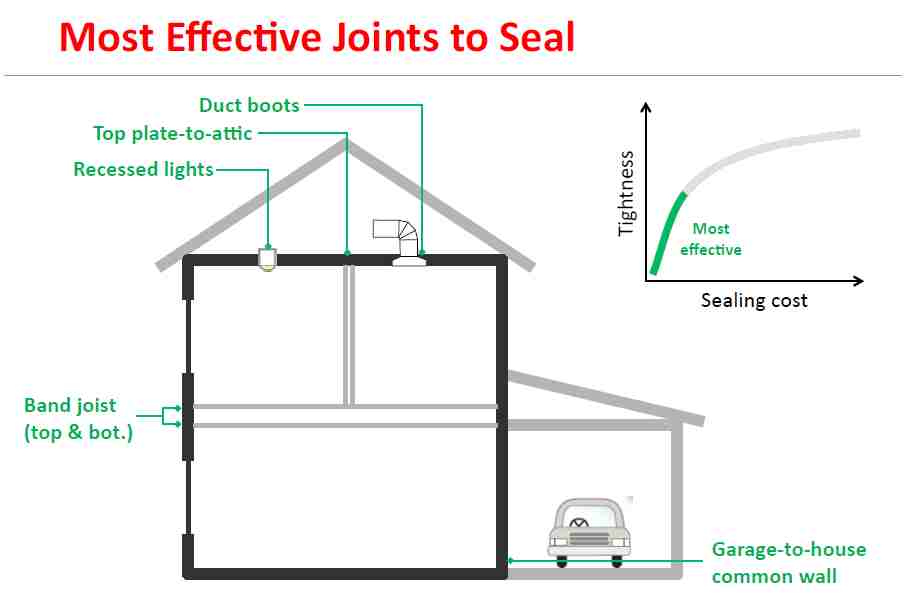With a goal of reducing energy use while increasing efficiency and cutting carbon emissions, the U.S. Department of Energy (DOE) in June proposed the first new energy efficiency standards update for manufactured homes in more than 20 years. The changes would cumulatively cut energy use by an estimated 30 percent over a 30 year period compared to the current standard and include a focus on the thermal envelope/insulation as the foundation of energy efficiency.
Details »Insulation Institute Blog
As fall approaches it’s time to consider options to weatherize your home. This means making improvements that can help improve comfort and lower energy bills, in the winter months and beyond. For homeowners trying to prioritize their home improvement dollars, and time, the question of what to focus on first often comes up. We’re going to make the case for attic insulation, as new data has come to light regarding its benefits.
Details »Addison Homes, a green builder in Greenville, South Carolina, certainly didn’t set out to cause trade partners to grumble, murmur or gripe. They set out to build DOE certified Zero Energy Ready Homes (ZERH) to provide their customers with the energy savings, comfort and indoor air quality such homes deliver. To do that, Addison Homes had to get local trades on board by doing things a bit differently. In doing so, they provided award-winning homes that customers rave about. They even show off the energy-efficient features included in the home (the homeowners in their winning Cobbler Lane project show their guests the pristine conditioned crawlspace…seriously).
Details »HERS ratings are fast becoming a norm for residential new construction. In 2008, 100,000 homes received a HERS rating. In 2016, we passed the 100,000 market in just the first half of the year. The growth in HERS ratings has in turn elevated HERS raters into an increasingly important advisory role for many builders. More than just providing a score, raters frequently influence the specification and purchase of energy-related home products, train subs on proper installation, perform QA, troubleshoot and of course provide needed building science knowledge. All this begs one question: what do builders think about this new player in the space?
Details »Over the years, there has been significant discussion about batt insulation slumping and loose fill insulation settling. Manufacturers often discount these claims as inaccurate or the result of rumors spread by competitors. They do this because they have test data they believe proves these defects are not real issues. But the perspective of builders, HERS raters, insulation contractors and other boots on the ground is driven by what they see in the field, and that includes settled loose fill and slumped batts. How do we reconcile the lab test with the eye test?
Details »As both a green and custom home builder, Eddie Fort of PD & M Contractors has a client base that is affluent and knowledgeable about energy efficiency. Fort, winner of the 2015 EarthCraft “Home of the Year,” award, builds shorefront properties in Smith Mountain Lake, Virginia, near the geographic center of the state and adjacent to Lynchburg. At a price point of $750,000 and above, Eddie works closely with his clients to deliver a dream home that includes all the “bells and whistles” you expect with a custom home, which typically means “high end” everything. But for PD & M, delivering energy efficiency and quality doesn’t have to come at a super premium price. In fact, the company insists on spending its client’s money wisely. One area where they achieve that goal is through using hybrid insulation systems – particularly “flash and batt.”
Details »Insulation Institute has been focusing of late on the topic of air sealing and what it takes to construct a home that is airtight using the “3 Ps,” — People, Practices and Products. Proper air sealing is critical for meeting stringent air change rates required for green building targets such as HERS, Energy Star, Net Zero or Passive House. While there’s a plethora of guidance available on air sealing from many sources within the building industry, the best guidance to convey to the various contractors involved in home construction can be distilled to this: air seal “like a boss.” That is to say that everyone involved in the construction of that home has a role to play and their role should not be viewed as that of a “jobber” but a “boss” when it comes to air sealing, because getting to stringent targets requires that one think “holistically” versus individually.
Details »Among the trickier areas to properly seal and insulate is around electrical boxes. These can often be sources of air leakage and are notoriously hard to properly insulate with batt products without excess compression. A new product, box shell, seeks to address both of these problems. As the site shows, the “shell” fits neatly around the electrical box, flush with the sheathing behind and affixed easily with a staple gun. From there, you can just cut a full notch out of a fiber glass batt and install it around the shell, then fill the area between the shell and the box with low expansion canned foam to seal it up. The company, still in its infancy, is offering single, double and triple junction box shells, all for under $2. Using these could help reduce concern that an evaluator, whether a building inspector or HERS rater, will ding you for problems around this typical trouble spot. A couple bucks for that peace of mind is probably worth it.
We’ve all seen the technique; it is very common in the building industry. A product manufacturer shows how their product can reduce or eliminate the need for other associated products, typically those that comprise some building system. The approach gets customers to think about costs holistically versus piecemeal. This happens in many industries, but given the complexity and systems-design nature of home construction it is very common in the building industry. The problem is that when multiple new assumptions are introduced into cost analyses you really need to look at the fine print to understand if all the assumptions are legitimate.
Details »Energy Efficient homes are in high demand among consumers and are a business imperative for builders who want to remain competitive. Air sealing is critical to achieving energy efficiency. But, when it comes to air leaks within a home, all points of entry are not created equal. Big holes in a building enclosure are easy to avoid, identify and fix, but smaller holes have proven to be a big problem. For any building to meet ever more stringent energy efficiency targets, all gaps and openings in a building enclosure should be air sealed. However, with so many possible air leakage points, and limited time/money to devote to air sealing, builders need to focus on getting the most bang for their air sealing buck.
Details »

